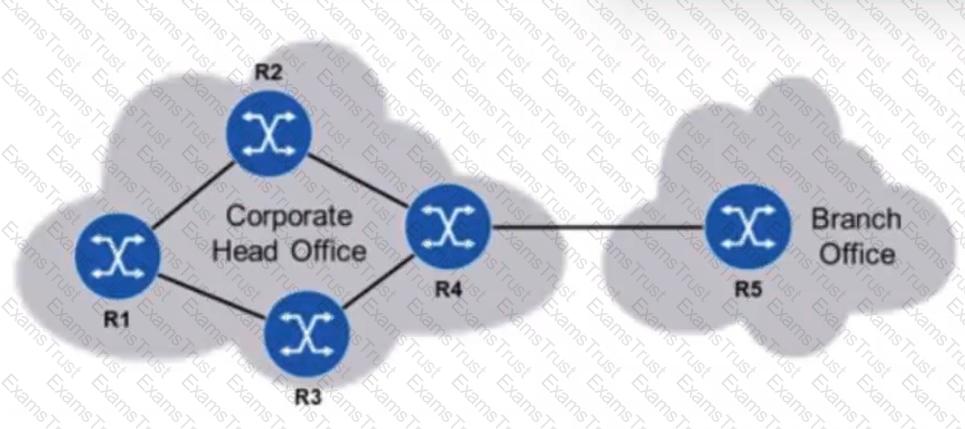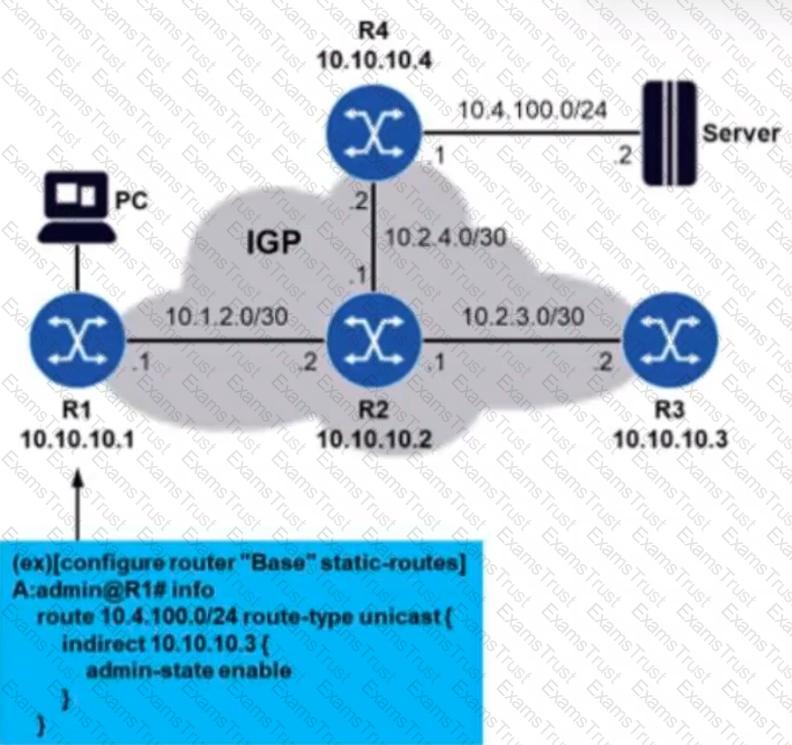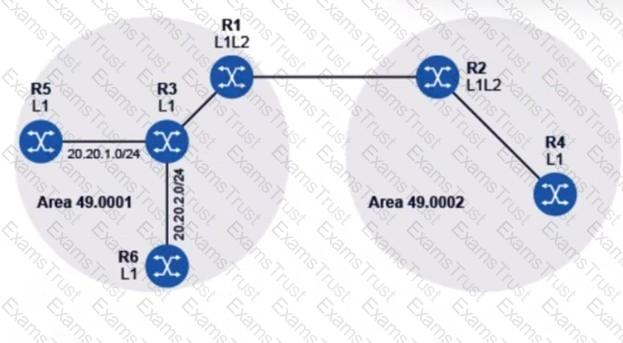A series of actions are triggered on a router as a result of enabling both loopfree-alternate for a link-state routing protocol and ip-fast-reroute. Which of the following is NOT one of those actions?
What do the address resolution protocol (ARP) for IPv4 and the neighbor discovery procedures for IPv6 have in common?

Routers R1 through R4 in the diagram have established IS-IS adjacencies. Router R1 is L1/L2 and is the DIS of its two broadcast interfaces. How many LSPs will it generate?
Which of the following is a valid alternative representation of the IPv6 address
2001:0da8:0000:0000:0024:0000:4ab9:0300?
When using IS-IS in native mode for routing in a dual-stack IPv4/IPv6 environment, which of the following statements is FALSE?
For a link-state routing protocol, which of the following statements about link-state updates is FALSE?

Static routing is to be used in a network between a corporate head office and a branch office. The head office has many connected subnetworks, whereas the branch office has one subnetwork and a single connection to the head office. Which of the following is the most likely configuration on the head office and branch office routers?

Routers R1 through R4 are running an IGP in such a way that they have each other’s system IP addresses in their routing tables. A static route is configured on router R1 so that it can reach subnetwork 10.4.100.0/24. The network administrator decides to use an indirect static route, as shown in the diagram. However, pinging the server from router R1 fails. What may be the problem in this case?
A routing domain uses a link-state routing protocol. Which of the following would NOT be an advantage of dividing the entire routing domain into areas?
What is the replacement for ARP in IPv6?

In the IS-IS network shown, router R1 has been configured to summarize subnetworks 20.20.1.0/24 and 20.20.2.0/24 as 20.20.0.0/16. Which routers’ routing tables will be reduced, compared to their routing tables before the summarization?
Which of the following statements about router interfaces on a Nokia 7750 SR is FALSE?